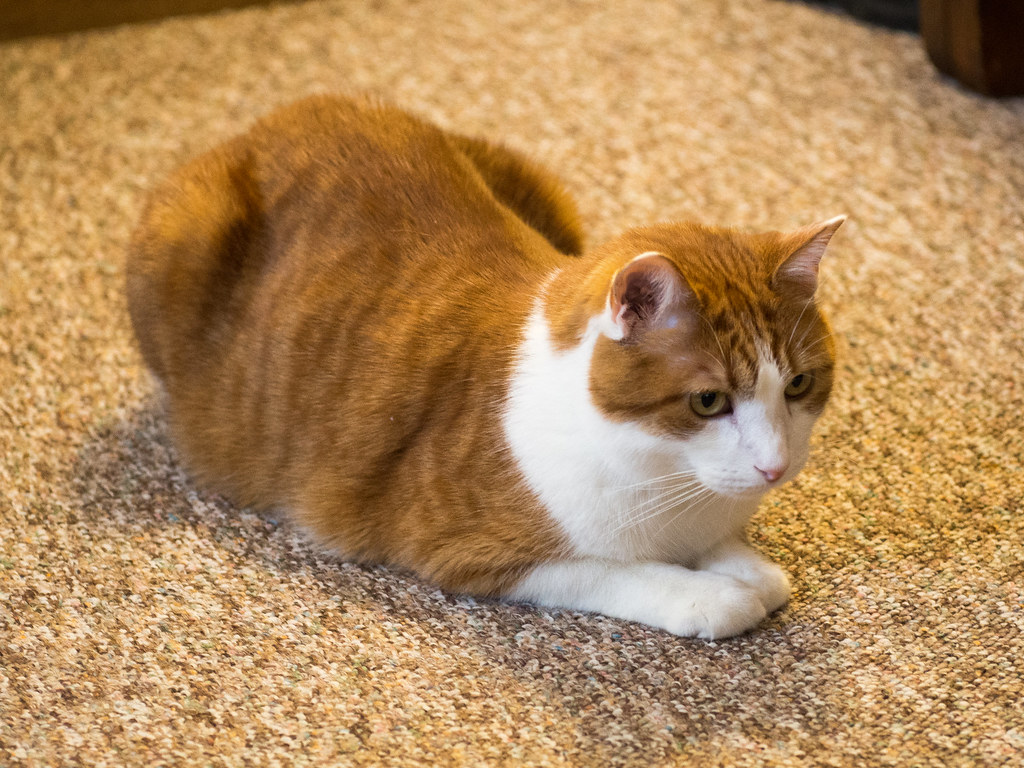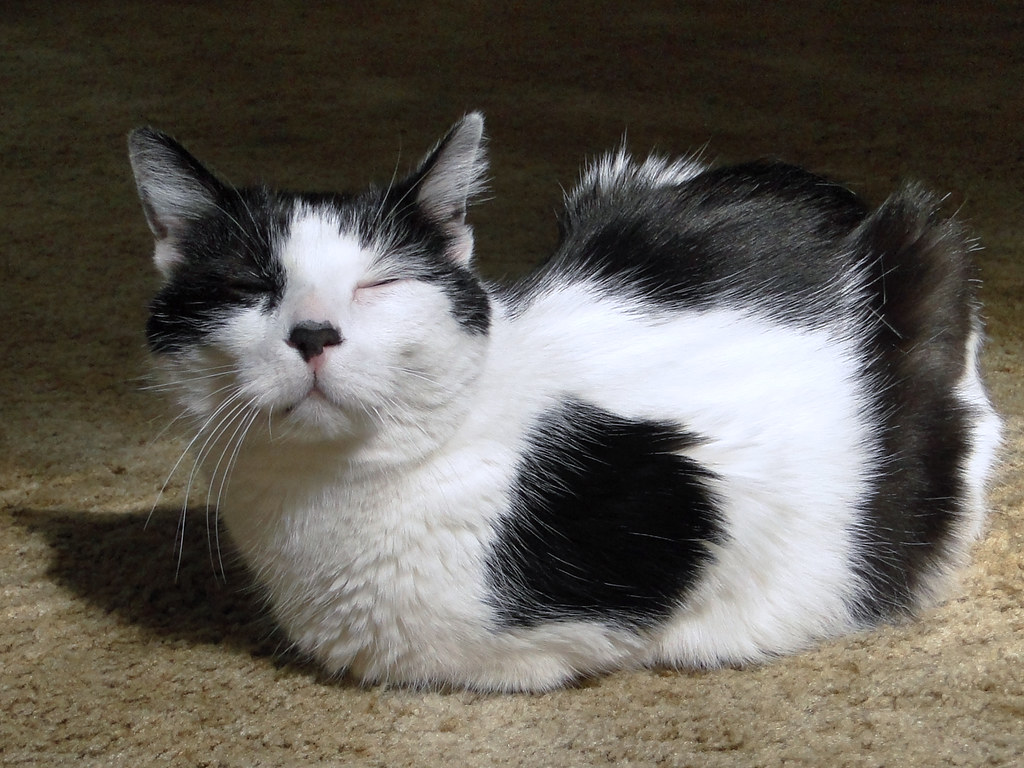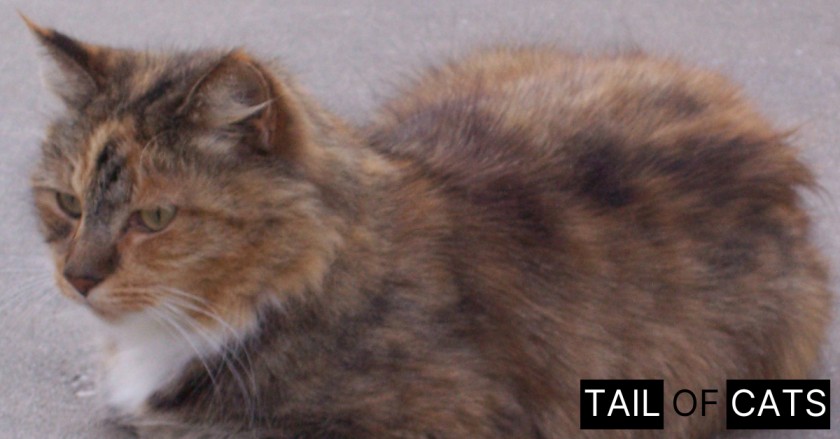Cats, with their myriad of quirky behaviors, never cease to amaze and entertain us. One such behavior that has captured the hearts of many is the adorable “cat loafing” pose. This pose, reminiscent of a freshly baked loaf of bread, has not only become a favorite among cat owners but has also inspired countless internet memes.
What Does a Cat Loaf Look Like?
When you picture a loaf of bread, you imagine a compact, rectangular shape with soft, rounded edges. Now, imagine your cat mimicking this shape. That’s the essence of a cat loaf. In this iconic pose, a cat sits with all four paws neatly tucked underneath, often with the tail wrapped around the body or hidden from view. The result? A compact, loaf-like feline that’s too cute to resist.
The term “cat loaf” has been in circulation since the late 1990s, gaining significant traction in the 2010s thanks to platforms like Reddit, Twitter, and Facebook. Other playful names for this pose include “bread cat,” “potato cat,” and even “tugboat cat.”
The Different Types of Cat Loafs
While the classic cat loaf is universally recognized, our feline friends have added their own variations to this pose:
- The Full Loaf: This is the quintessential cat loaf. Here, the cat has its head raised, all paws tucked neatly beneath, and the tail wrapped securely around its body. It’s the pose that most people recognize and adore.
- The Partial Loaf: In this variation, the cat might have its front paws slightly visible. Some cats prefer to keep their elbows pointed outwards, giving a more relaxed appearance. Others might extend their paws forward, reminiscent of the majestic Sphinx.
- The Face-Plant Loaf: A rarer but equally endearing pose. In this version, some cats prefer to rest their face down, almost as if they’re too tired to hold their head up. The reasons for this unique pose remain a mystery, but it’s a delightful sight nonetheless.

Delving into the Reasons: Why Do Cats Loaf?
Cats, being the enigmatic creatures they are, often leave us pondering about the reasons behind their behaviors. The cat loaf is no exception. While the exact reasons can vary from one feline to another, several theories have been proposed by experts:
- Relaxation and Contentment: At its core, the loaf position is a sign of a relaxed and content cat. When they tuck themselves into this pose, it often indicates they feel safe and at ease in their environment. The absence of visible paws or a tail suggests they’re not in a defensive position, further emphasizing their sense of security.
- Heat Conservation: Cats are adept at regulating their body temperature. By loafing, they can conserve body heat, especially during colder months. This is akin to us wrapping ourselves in a blanket on a chilly day. The compact pose minimizes exposure to cold surfaces and reduces heat loss.
- Staying Alert: While the loaf might seem like a restful pose, it’s also a position of readiness. From here, a cat can quickly spring into action, whether to chase a toy or react to a sudden noise. Their keen senses remain alert, tracking movements and sounds even as they loaf.
RELEVANT: Why Do Cats Hiss?
When Loafing Might Indicate a Problem
While the loafing pose is generally a sign of content and relaxed cat, it’s essential for cat owners to be observant. Sometimes, what appears to be a typical loaf might be a cat’s way of signaling discomfort or pain.
- Signs of Discomfort: If your cat’s loafing posture seems rigid or tense, or if there’s an arch in its back, it could indicate discomfort. It’s crucial to observe any changes in their loafing habits, as these could be subtle signs of underlying issues.
- Health Concerns: In some cases, a cat might adopt the loaf position to alleviate pain or discomfort, especially in the abdominal area or lower back. If you suspect your cat might be in pain or if their loafing behavior is accompanied by other symptoms like lethargy, loss of appetite, or changes in litter box habits, it’s time to consult a veterinarian.
RELEVANT: Why Doesn’t My Cat Purr?
The Cultural Impact of Cat Loafing
The cat loaf has transcended beyond a mere feline pose. Its charm and ubiquity have made it a cultural phenomenon, especially in the digital age.
- Internet Stardom: From memes to dedicated social media accounts, the cat loaf has become an internet sensation. Platforms like Reddit, Twitter, and Instagram are brimming with photos and videos of cats from around the world, all showcasing their best loaf poses.
- Merchandise and Art: The cat loaf’s popularity has also inspired a range of products, from t-shirts and mugs to art prints and sculptures. For many, the cat loaf has become a symbol of the universal love and adoration we have for our feline companions.
- A Universal Symbol: Regardless of where you are in the world, the cat loaf is a universally recognized and cherished pose. It serves as a testament to the deep bond and fascination we share with our feline friends.

Interpreting the Subtle Signals of Cat Loafing
While the cat loaf is a common and often endearing pose, it’s also a window into the world of feline communication. Cats are masters of subtlety, and their body language can offer insights into their mood and well-being.
- Signs of Trust: A loafing cat in your presence often indicates trust. They feel safe and secure enough to adopt this non-defensive posture, showcasing their comfort with their surroundings and their human companions.
- Observing Changes: It’s essential to notice any changes in your cat’s loafing behavior. For instance, if a typically relaxed loaf suddenly appears tense or if the cat seems to favor one side, it might be time for a health check-up.
- The Warmth Factor: If you often find your cat loafing in warm spots, like near a heater or on freshly laundered clothes, it’s a clear indication they’re seeking warmth and comfort. This behavior is especially prevalent during colder months.
Celebrating the Cat Loaf
The cat loaf, in all its glory, is a celebration of the quirks and idiosyncrasies of our feline friends. It’s a testament to their unique personalities and the joy they bring into our lives.
- Capturing the Moment: Many cat owners have taken to photography to capture their cats in the perfect loaf pose. These images often become cherished memories, immortalizing moments of feline contentment.
- Sharing the Love: The internet has provided a platform for cat enthusiasts worldwide to share and celebrate their loafing cats. From dedicated forums to social media hashtags, the cat loaf continues to spread joy and laughter.
Conclusion: The Timeless Charm of the Cat Loaf
In the grand tapestry of feline behaviors, the cat loaf stands out as a symbol of relaxation, contentment, and trust. It’s a reminder of the deep bond we share with our cats and the countless moments of joy they bring into our lives. Whether you’re a seasoned cat owner or someone who simply admires cats from afar, the cat loaf is a universal sign of the enigmatic and endearing nature of these beloved creatures.
As we conclude our exploration of the cat loaf, let’s take a moment to appreciate the simple pleasures of life – like watching a cat peacefully loafing in a sunlit spot, reminding us to find contentment in the little things.

